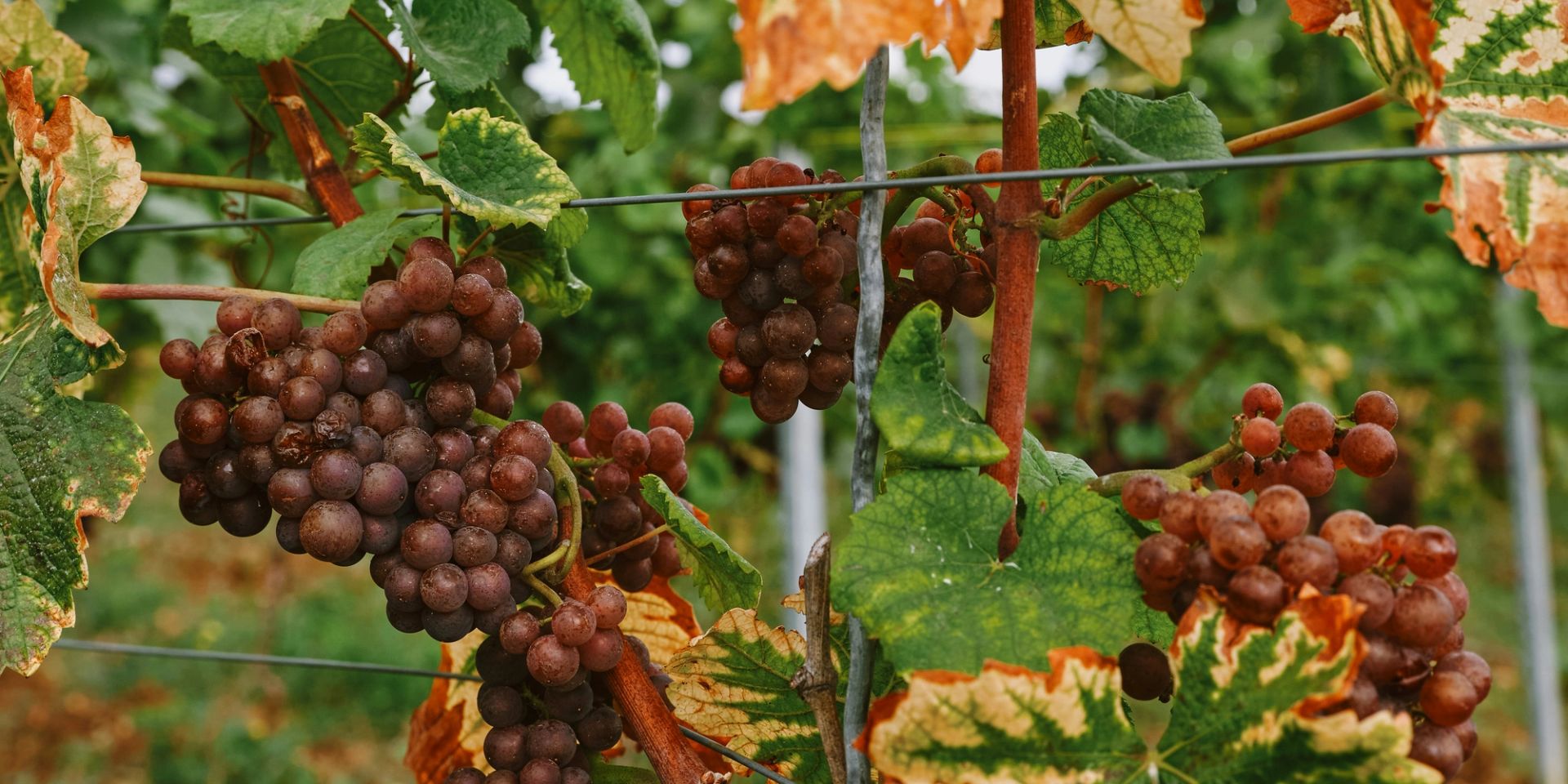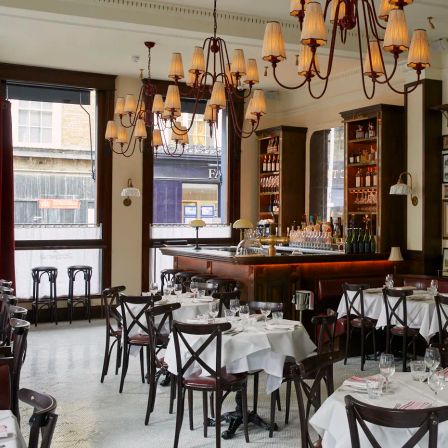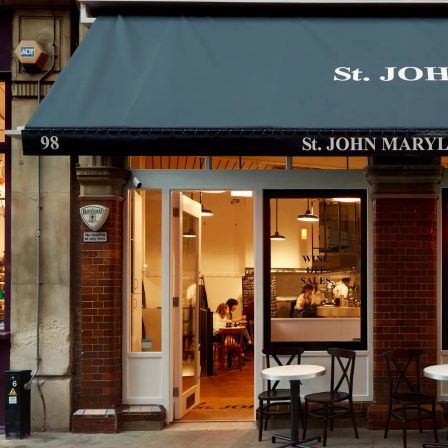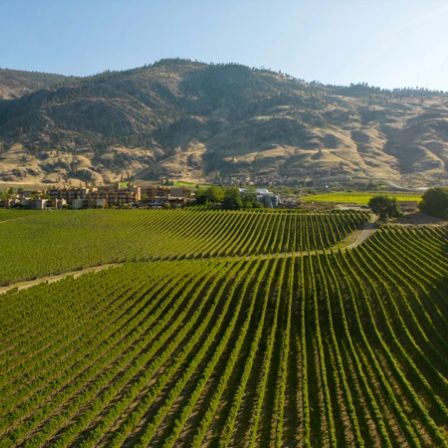- Places
Jacob’s Creek for £30? Inside the new Indian Wine Boom
Despite punitive taxes and religious heritage, a new wind is blowing on the subcontinent. Just don’t expect ‘wine’ to always mean ‘wine’...
- Words By Lisse Garnett

Nearly 80 years after independence, India still flavours life throughout Blighty — the Urdu word for foreigner, as it happens. Where would we be without tea, chutney, pyjamas, cashmere, cricket and curries? My generation was reared on weekly ‘Indians’. My old Dad resided in Hackney during the 80s, the home of the post-boozer Ruby Murray, where curry connoisseurs, Minder and The Sweeney occupied our screens every Saturday night. You never went to an Indian restaurant expecting decent wine back then. It was beer and curry, always.
India has no historic wine culture. Most Indians do not even consider wine an alcoholic beverage made from grapes. The Maharajas were big into wine, and they bought copious quantities of top-quality European labels a century ago — vintages befitting the sumptuousness of their extraordinary palaces.
Nowadays, you’d almost have to be a Maharajah to drink the stuff. India is a union of 28 states that operate independently of each other. Alcohol taxation is punitive and broad in all of them. There is no free movement of alcohol, and you must cross three states just to service Delhi from the border. Laws governing booze vary widely from state to state, with at least four prohibiting alcohol altogether. Yet Indians consume more whisky than any other nation in the world: consumption grew by 17.3% this year despite a 150% tariff on imports.
Most Indians do not even consider wine an alcoholic beverage made from grapes.
In this way, India marches to the beat of her own drum. If the upwardly mobile want something, they find a way to get it. The population’s spending power has never been greater. For while we Brits languish in damp economic ennui, India is booming. In 1965 India’s GDP was 8.5%. In 2022 it had risen to 49.4%.
India has become an exporter of services, a status previously afforded to developed countries alone. Apple has moved manufacturing to India from China. The country’s upwardly mobile middle classes are set to encompass 60% of the population over the next 20 years.
The potential for wine is huge. India has changed much in the last 50 years, but she still does things in her own defiantly idiosyncratic way — as recent imports prove.
McDonalds, for example, only succeeded in the country by evolution — there is no beef nor pork on the Indian MacDonald’s menu, but you will find the McAloo Tikki Burger and McSpicy Paneer. The British based Wine and Spirits Educational Trust has had to adapt to the nation’s idiosyncrasies, too. In Britain it is only possible to take the WSET exams if you have studied with WSET or an affiliate. When WSET came to India in 2007, entrepreneurial wine schools popped up all over the big cities offering the same knowledge for less. WSET chose to adapt. In India, you can take the WSET exams without attending a WSET course.
Kamal Malik is India’s first and only Master Sommelier (and an newly minted one at that) — an outstanding achievement for a man born of farming stock with no access to wine growing up. Malik says the key to wine sales in India has to be education.
"Most families are not wine drinkers in India, including my own. Most people simply don’t know anything about it. To them wine and whisky on the shelf is probably the same thing. They may see different colours, and note one has less alcohol than the other — which may be seen as a negative. People simply don’t know what it is, much less if they should add coke or water to it. Wine is at a disadvantage as no one knows how to drink it."
Malik currently works in the Maldives. During his recent studies he was mentored by the Master Sommelier Ronan Sayburn who is based in London. Ronan advised him to move to London in order to pass the exam so he could taste more broadly and be mentored face to face. Then Covid hit. Malik surmised he was lucky to have a job at all, so stayed put. He is an extremely talented man who has worked his way up from bartender to the one of the very highest accolades in wine. He credits Ronan for his help and dedication. Malik’s tasting skills are legendary but he is a modest man. He passed the tasting in one go despite living on a remote island archipelago with limited access to wine. He says:
We need to make wine more popular in India.
“We need to reach out more, tell people about it. It’s not promoted by the government. It's rather discouraged, which has implications. Wealth distribution has changed, and India makes its own wine which does not go through the same punitive duty taxes as imports. More and more of the middle classes are getting into it in the big cities.”
The middle classes are consumption catalysts the world over. They drive social change and effect political stability as they act as consumption mediators between the rich and the poor. Liberalisation has driven economic growth in India, but a punitive anti-alcohol tax system and complex distribution — coupled with the fact that India is in effect 20-something governments in one, each of whom demands an eye-watering cut of imported wines — means there is a long way to go. But if even a small percentage of India’s gigantic 1.4 billion strong populous start to sip vino, the industry will be just fine.
LVMH owned Chandon has distributed in India since 2014. The company established its own winery in the country in 2016, and the results are sold in 22 Indian cities. The Indian brand Sula was founded in the 1980s and, despite industry consolidation during the 2006 crash, is the largest wine producer in India. Chowgule’s Chateau Indage, the producer of the popular Omar Khayyam sparkling wine, was the largest winery before 2007. But it fell into liquidation and has now been resurrected. Grover Vineyards in the hills near Bangalore makes La Réserve, a red Bordeaux blend made in consultation with Michel Rolland.
Climatic challenges exist too. In the Tropics it is possible to harvest twice yearly — but that is not the done thing for quality grapes. Altitude is key. India is gigantic, so the right climate surely does exist. But grapes may not be growing in the ideal spots yet. The state of Maharashtra has the largest concentration of vines. Malik says the northeast is out thanks to the Monsoon climate — simply too damp. Likewise the state called Meghalaya — or ‘The House of the Clouds’ — which is the wettest in India. Malik says:
We are not one country, and every state makes its call. It will take a change in perception and understanding to make wine-making possible for those of us without endlessly deep pockets. For now, it’s a very rich man’s game.
“Wine and Liquor Store in India means Liquor and Liquor store — it has nothing to do with wine at all. The stores are a residue from British rule and are not at all what they say on the tin. A wine and beer shop in India may well not have any wine in it. That’s symptomatic of the need for understanding and change to facilitate the trade of wine in India.”
Charismatic couple Ritu and Rajiv Singhal have been promoting fine wine in India for two decades. They have made it their business to introduce formal wine education to India, and they single handedly instigated an extremely successful wine-by-the-glass initiative funded by the French Ministry of Agriculture. They also have a hugely successful subscription-based wine magazine called Fine Wine & Champagne India.
“There was a legacy of fine wine in India bought by the Maharajas, but this fell away. The first vines were planted here in the 1980s by visionaries, Shymarao Chowgule and Kanwal Grover, who convinced Montpellier to allow the import of French vines. Indage and Grover were French/European collaborations: Indage with Piper Heidsieck and Grover with Veuve Clicquot. Michel Rolland remains as a consultant at Grover, even though the company has changed hands many times over.”
Ritu and Rajiv Singhal realised that wine education was fundamental to wine's success in India. They were able to run sit-down classes thanks to the funding they personally pitched for in France in the year 2000. It had never been done before and the sessions were extremely serious, eight hours of solid training, 15 wines, the equivalent, says Rajiv of WSET level ‘two-and-a-half.’
The Singhals’ wine-by-the-glass programme in 2006 involved a second approach to the visiting French Foreign Minister, which was initially rejected. They persisted, through the orchestrations of a colleague who ordered wine by the glass in the French Minister’s presence. After 30 minutes, the glass of wine appeared (they had clearly had to run out for it). The delay was enough to convince the Minister that by-the-glass was worth funding. They served 30,000 bottles of wine by the glass without a single glass of spoilage, thus establishing a hitherto non-existent market. The programme was exactly what the industry needed. Today everyone serves wine by-the-glass as standard operating procedure. The pair also got the first display licence ever for alcohol and an in store tasting licence, too. Advertising alcohol is illegal in India.
“The Indian by nature is very adventurous and they are now able to travel extensively, say Ritu and Rajiv. “Many catch the wine bug abroad. Indian wine is becoming more popular with young professionals. Our target audience today is women and young people. This has evolved. When we started it was the 40 plus age group we targeted. Today it is 20 plus.”
Half of India’s population is under the age of 26, thanks in part to an insanely high birth rate. Champagne was the drink of choice for many young Indians on their 25th birthday, an auspicious age and India’s equivalent to the UK’s 21st. But Champagne sales wavered considerably during Covid and are only now starting to recover.
“We’ve always lived with high rates of tax on luxury products like handbags or tableware, but they have the advantage of being able to be moved wherever they are required. In the case of alcohol, unfortunately, even though you pay the highest tax possible, you need a licence to move the product from the airport to the warehouse, from the warehouse to the shop and from the shop to the buyer’s house. Special permits need to be issued and the logistics are a nightmare.”
"Temperature control is another issue. Forty-five degree days are no good for wine. There was therefore an urgent requirement for the creation of a cold chain infrastructure to enable the transportation of wine without destroying it with heat. We also struggled to get across that a wine label should not be taxed multiple times because there were multiple vintages. We have lobbied hard. Today we consume 3 million cases of wine a year in India of which half a million are imported."
Ritu and Rajiv Singhal also host high-end wine dinners that routinely sell out. One entitled ‘The Australian Wine Century’ featured wines going back a hundred years and ports going back 175.
More and more people are coming to fine wine in India. Availability is an issue but opportunities are increasing. The propensity to buy in India is unrivalled anywhere in the world.
The largest selling label in India today is Jacobs Creek, which was owned by Pernod Ricard but has not long been sold to Australian Wine Holdco Ltd. In India, Jacobs Creek retails for between twenty-seven and thirty pounds. I found it here in Britain online today for seven quid. Moët at Chandon in a 5-star hotel in Agrabah will set you back £750 — and yet, incredibly, it still sells too.
Kamal Malik and Ritu and Rajiv Singhal are the ideal emissaries for wine in India in these peculiar circumstances. They refuse to see obstacles as anything but challenges to overcome. The Indian wine boom is coming, make no mistake. The only question is when.
Come on in the Chablis lovely, Your new home of drinks.
Stay up to date with all the latest from House Of Decant.


